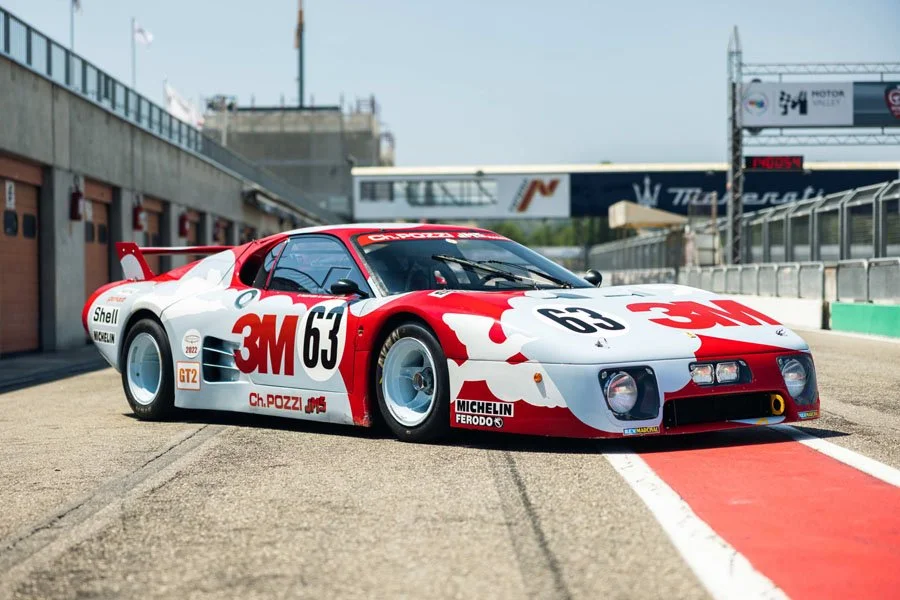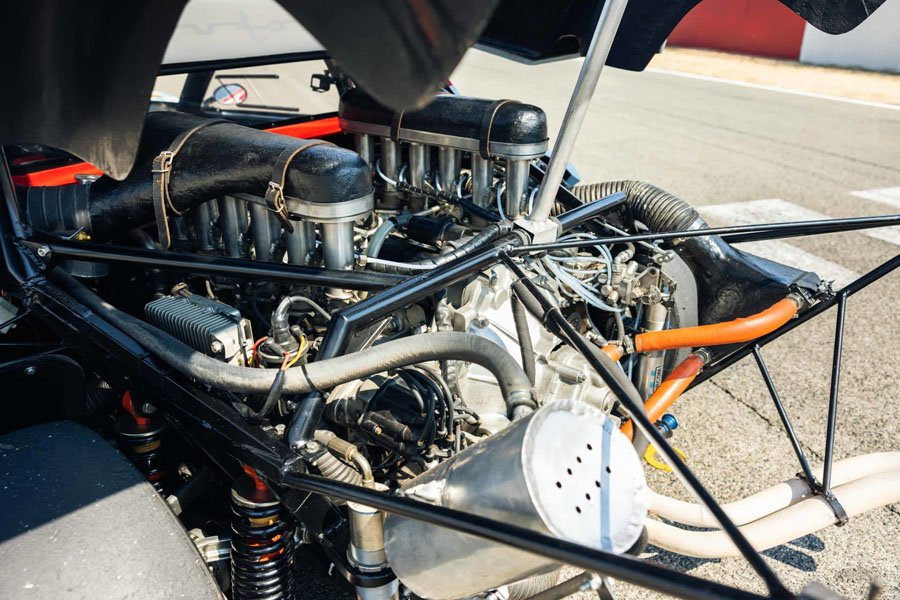One to Buy: ex-Pozzi 1979 Ferrari 512 BB LM
/ Ben Tyer
Having witnessed the potential of Luigi Chinetti’s NART-prepared 365-based BB racing cars, one of which had finished sixth at the 1975 Sebring 12 Hours, Ferrari sanctioned the creation of three lightly modified 512 Berlinetta Boxers for the 1978 Le Mans 24 Hours.
However, none made it to the finish and it was clear that, if Ferrari’s satellite teams were to be able to compete against the Group 5 Porsche 935, a more serious programme would need to be undertaken.

Accordingly, a batch of nine highly modified cars were built up at Ferrari’s Assistenza Clienti over the winter of 1978-1979.
Conceived for use at high speed tracks like Le Mans and Daytona, the resultant 512 BB LM was built around a radical lightened and stiffened chassis, into which was dropped a circa 470bhp Lucas fuel-injected engine. The suspension, brakes and fuel tanks were suitably enhanced, wide wheels and tyres were fitted and interiors were stripped to the bone.

All of this was draped in a super lightweight body with massively extended nose and tail sections and a huge rear spoiler.
The initial batch of nine cars were subsequently followed by a further 16 examples assembled between mid 1980 and late 1982. In 1981, the team of French Ferrari distributor, Charles Pozzi, famously finished fifth overall at la Sarthe and won the IMSA GTX category with a BB/LM.

Currently on offer with Girardo & Co. is another ex-Pozzi team car from this exciting era: chassis 26685.
One of the initial batch of nine cars built, 26685 is perhaps the most famous BB LM of all on account of its spectacular Jean Fougerol art car livery worn for the 1979 Le Mans 24 Hours.

Today, chassis 26685 is offered in superb restored condition with Ferrari Classiche red-book certification and an FIA HTP valid until 2029.





















































